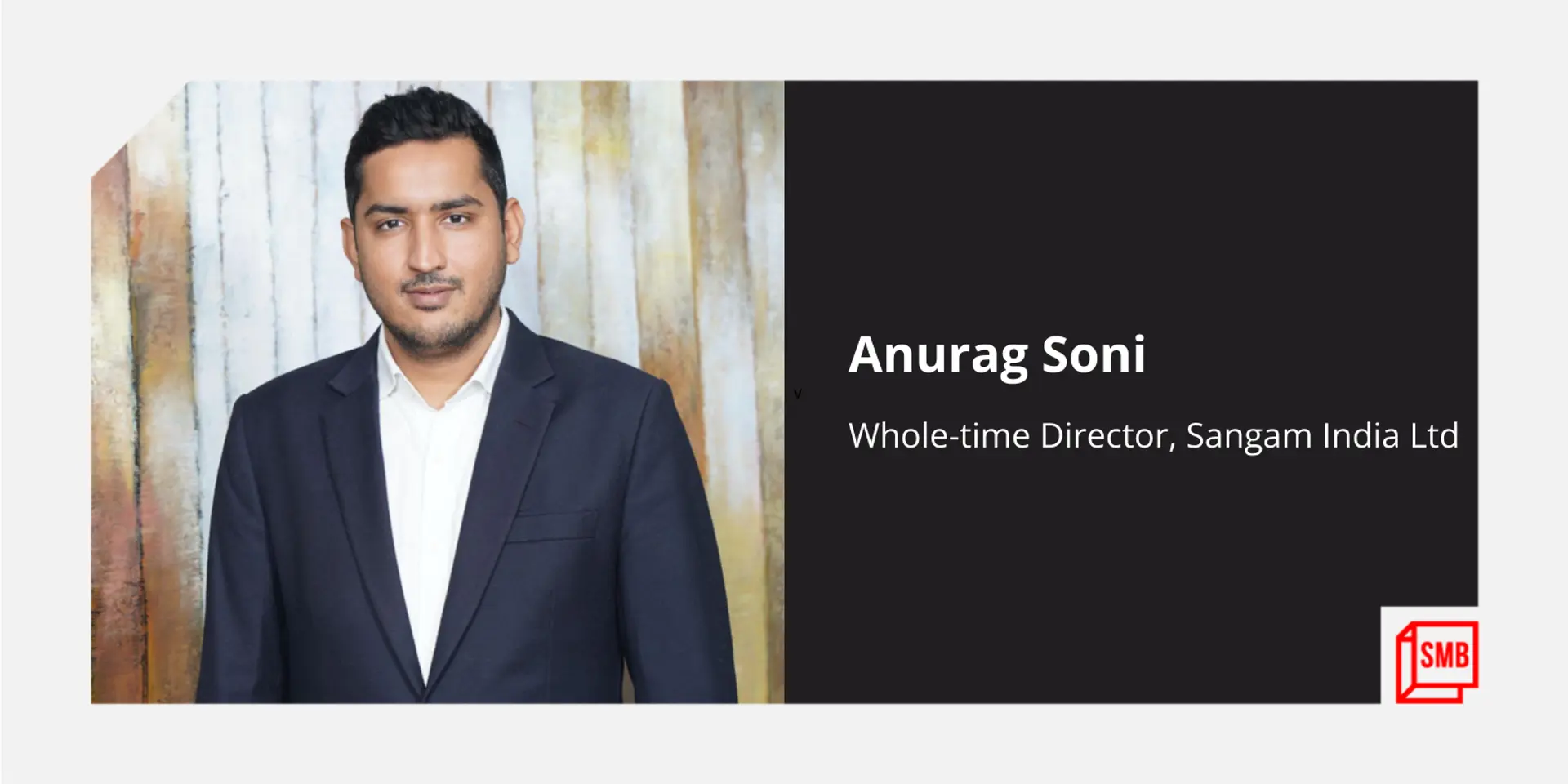Starting with 8 weaving machines to becoming a Rs 1,300 Cr turnover textile company: The story of Sangam India
NSE-listed textile company Sangam India was founded in 1984. Starting with eight weaving machines, the company now boasts over two lakh spindles and 3,000 rotors to produce PV and denim fabric.
In the early 80s, the textile industry was becoming a lucrative space for budding entrepreneurs. The policy reforms materialising in India eradicated entry barriers for many to create various Indian companies, especially in the spinning sector.
Ram Pal Soni, an Engineer in PwD, also thought of tapping into this opportunity, and he decided to quit his 9 to 5 job. In 1984, with an investment between Rs 20 and 25 lakh, he launched .
Starting with eight weaving machines, Bhilwara-based Sangam India is now recognised as one of the leading companies in the textile industry, making an annual turnover of Rs 1,363 crore.
In an interaction with SMBStory, Anurag Soni, second-generation entrepreneur and Whole-time Director, Sangam India, talks about the business’ legacy and how it is foraying into B2C space, besides B2B, to tap newer opportunities.
Making of the largest textile brand
In the initial days, Anurag’s father started operations with eight weaving machines, where the company sold the fabric through a small distribution network.
Until 1995, the company was primarily doing weaving, after which, Anurag says, Sangam tinkered with backward integration to spinning with 17,280 spindles of PV dyed yarn and increasing it to 11,520 spindles in 1998.
“The business has been profitable since inception, and so is the growth trajectory. We got listed in 1993. In 2003, my father built a 10.0 MW coal-based captive power plant, adding 35,232 spindles,” Anurag says.
Sangam India has three business verticals — one, where it makes synthetic fabrics to manufacture denim, second, it also produces synthetic and cotton yarns, and third, it has expanded to the garment business.
Annually, the company produces 30 million metres of PV fabric and 48 million meters of denim fabric from over 2.8 lakh spindles and 3,000 rotors. Its clientele includes Indian defence services, state police services, etc.
“We have also introduced a seamless garment manufacturing facility with 54 seamless knitting machines that can produce five million pieces per annum,” Anurag tells SMBStory.
In 2015, Sangam India decided to foray into the B2C vertical with the launch of C9 Airwear — a casual wear and activewear apparel brand — as it wanted to cater to consumers directly.
At present, the brand is available across 1,000 multi-brand outlets in India and major online retail marketplaces. The company’s flagship brand — Sangam Suitings — operates through a distribution channel and has a pan-India network of 10,000 retailers.

C9 Airwear range
Going sustainable
Besides expansion across categories, Sangam India aims to achieve business and environmental sustainability.
Adding, “Sustainability is the future,'' Anurag says, Sangam India is strategically trying to become an environment-friendly conglomerate, encouraging sustainability in the Indian textile industry.
For this, the company has taken several initiatives like installing 5 MW solar power plants in its manufacturing units located across Rajasthan which can help the textile industry resolve harness development with sustainable energy.
In fact, Sangam India has installed three Effluent Treatment Plants (ETPs) and four Sewage Treatment Plants (STPs) to reduce industrial water contamination and reclaim the water for favourable purposes.
“We are using tonnes of recycled fibre to elevate costs in complex manufacturing processes, leading to procuring less raw materials. We also produce organic cotton to diminish greenhouse gas emissions. In addition, organic cotton reduces soil erosion and promotes healthy soil,” Anurag asserts.
The market scenario and future plans
According to the IMARC Group, in 2020, the Indian textile and apparel market was estimated to be $133 billion. It is expected to grow at a CAGR of 13.80 percent between 2021 and 2026.
However, Anurag says, the lack of free trade agreements is making the Indian textile industry globally uncompetitive, compared to India’s neighbours Pakistan, Sri Lanka, and Bangladesh. Sangam India Ltd exports to 58 countries including Turkey, Latin America, Portugal etc.
Globally, India is the sixth-largest exporter of textiles and apparel. However, according to Anurag, the government needs to address high export freight rates.
Competing with the likes of LNJ Group, Siyarams, Banswara Syntex Ltd, and more, Anurag says that extensive expansion is on the company’s cards in the future.
Recently, Sangam India’s board approved the expansion plans for its cotton yarn vertical worth Rs 137.25 crore, along with Rs 157 crore for an expansion project in seamless garments.
Besides, the company will install 32,000 spindles in its spinning cotton unit, along with 106 new machines in seamless garments.
Edited by Suman Singh









